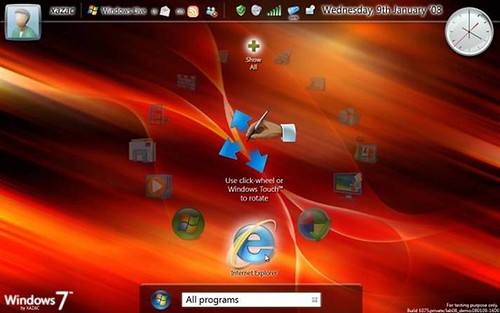Remove OGA Office Not Genuine Notifications (Uninstall KB949810)
All Microsoft Office versions such as MS Office 2003, MS Office 2007, MS Office 2010 or MS Office XP are getting updated with Office Genuine Advantage Notifications (OGA KB949810) automatically. Once installed KB949810verifies your product key number and if it finds the product key number illegal or pirated, it will start showing a “This copy of Microsoft Office is not genuine” notification in your system tray area along with at splash screen whenever you try using Office programs.
OGA crack was a rumor and we are yet to see any KB949810 crack working. But we can manually uninstall this KB949810 update to get rid of these notifications. Do note that this update can’t be removed from ‘Add or Remove Programs’ interface as it does not show up there. But you can follow the below working tricks to disable and remove Office not genuine notifications from system tray and MS office programs interface.
Disable OGA Notification : Hack – 1
We can remove OGA notification by disabling OGAAddin.dll from loading when we start Office applications. OGAAddin.dll file shows the notification and removing this will stop such notifications from appearing. This below hack will make Windows think that KB949810 is properly installed and it will not prompt you for further installation.
- Go to Start >> Run >> Type regedit in the box and hit Enter
- This will open Registry Editor window, press Ctrl+F to open search box
- Type OGAAddin.connect in the serach box to find this registry key
- Once found, Right click on Load behaviour and select Modify option
- Edit and change the value from 3 to 0
- Repeat this process for each and every instances of OGAAddin.connectkey
- You are done.
Disable OGA Notification – Hack 2
This hack will completely remove OGAAddin.connect registry key from system registry and the OGA notifications will be automatically removed. However the system might ask you to install this update using Windows Live Update again.
- Go to Start >> Run >> Type regedit in the box and hit Enter
- Navigate to the following key paths and remove these registry keys completely from your system. You might find any other key which contains OGAAddin.connect registry value, remember to remove all of them.
- Delete the OGAAddin.connect registry value from above paths
- You are done.
hkey_local_machine\software\microsoft\office\word\addins
hkey_local_machine\software\microsoft\office\excel\addins
hkey_local_machine\software\microsoft\office\powerpoint\addins
hkey_local_machine\software\microsoft\office\outlook\addins
Disable OGA Notifications – Hack – 3
This hack will remove OGAAddin from within MS Office applications, but you need to sign into any user profile on your computer with administrative access.
- Navigate to C:\Program Files\Microsoft Office\Office12 (address might differ depending on your Office version and installation drive) >> Right click on any office applications such as inword.exe, excel.exe, powerpnt.exe etc and choose Run as Administrator option
- Head to Options (at the bottom of the menu) >> Add-Ins
- Select COM Add-ins under Manage drop down list >> Hit Go
- Disable or remove OGAAddin
- Follow the above process to remove OGAAddin from each and every office application
- You are done.
Disable OGA Notifications – Hack – 4
We can completely disable OGA or KB949810 notifications by uninstalling KB949810 OGA Notification via OGANotifier.msi and this will stop and remove all OGA notifications.
- Navigate toC:\Windows\SoftwareDistribution\Download\8998da55d52b36c0e98ba016ddd50de0\ folder (Assuming C:\ as your installation folder)
- Extract OGANotifier.cab using WinRAR to find a file named asOGANotifier.msi
- Right click on OGANotifier.msi >> select Uninstall
- Block automatic update installation to avoid further installation
- You are done.
Disable OGA Notification – Hack – 5
Microsoft does not allow people to uninstall OGA notifications, but you can easily delete and remove OGA components from your system manually. In this way, they will be automatically go inactive and you won’t see those boring “This copy of Microsoft Office is not genuine” notifications again.
- Close all Office applications first
- Navigate to C:\Wndows\System32 or C:\Windows\SysWow64 folder and delete the following files
- You are done.
OGAVerify.exe
OGAAddin.dll
You can follow any of above 5 tricks to uninstall, remove or disable Office Genuine Advantage notifications (OGA or KB646810 notifications). Remember to disable auto-update feature else KB949810 update will get installed again.












